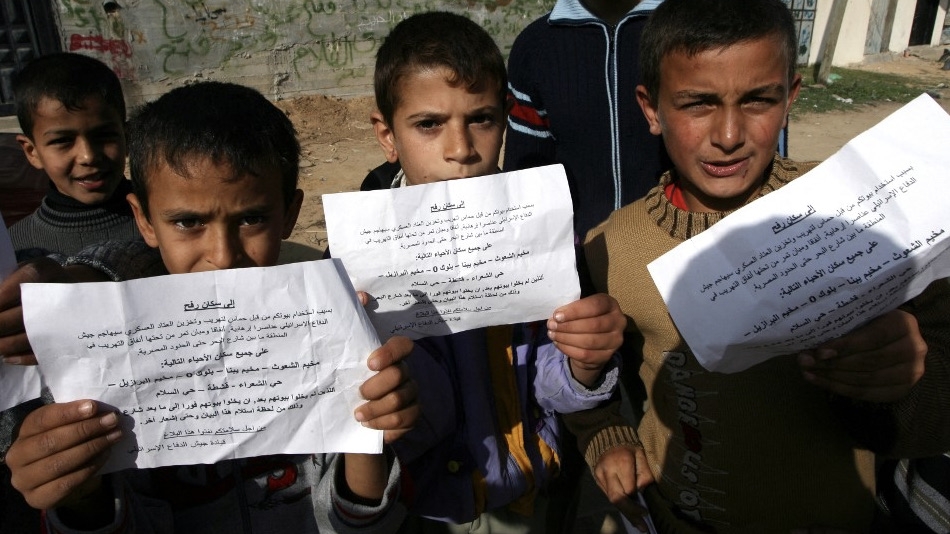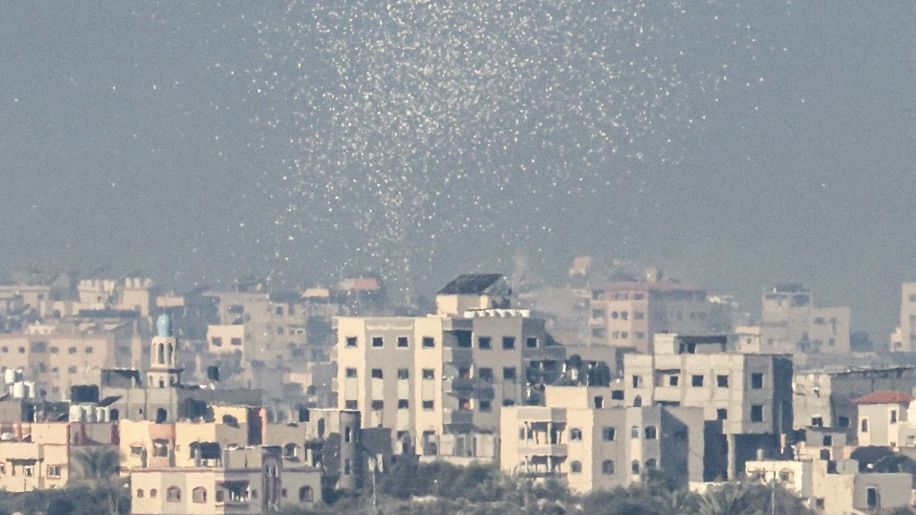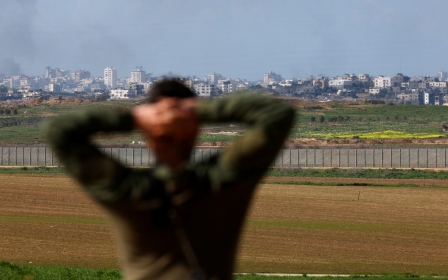War on Gaza: Israel's leaflet-dropping helps boost Palestinian resilience

Israeli forces are using psychological warfare on the 2.3 million residents of the Gaza Strip, to try to demoralise them, spread disinformation and turn them against Hamas.
The primary tools of such campaigns are leaflets dropped from planes and balloons, propaganda tactics used in the two world wars by both sides and in the American attacks on Vietnam and Iraq.
During those conflicts, the leaflets called on militants to surrender. The German Nazi Joseph Goebbels said about the leaflets dropped by the allies: "Their leaflets are addressed to the weakest points in the nation. They are weapons ... and we must be careful with all weapons."
Of the present Israeli campaign, Alia Kassab, 23, said: "When leaflets were dropped on Gaza two months ago, my little brothers were happy to see coloured papers falling from the sky.
"They thought it was a new, interesting activity. But the rest of us were terrified; we knew the consequences."
New MEE newsletter: Jerusalem Dispatch
Sign up to get the latest insights and analysis on Israel-Palestine, alongside Turkey Unpacked and other MEE newsletters
On Thursday and just a few days away from the start of Ramadan, Israeli forces air dropped leaflets on Gaza marking the Muslim holy month. Palestinians denounced it as a form of "psychological torture".
The leaflets call on citizens to “feed the needy and speak kindly" during a time when hundreds of thousands in the besieged territory are at risk of starvation because of the Israeli blockade on food and water.
Scores of Palestinians have died because of dehydration and malnutrition since the start of the war on 7 October, following Israel's decision to cut off all food, aid, electricity and fuel for the already besieged enclave.
The leaflets, written in Arabic, had images of lanterns typically used as Ramadan decorations.
They included a prayer asking God that "fasts are accepted and sins are forgiven" and that Palestinians in the region have a "delicious breaking of the fast".
Customised messages
The 2023-24 assault is not the first time Israel has deployed leaflets as a tool of warfare. In 2014, they were used extensively to turn civilians against each other and spread terror.
And in 2018, they were dropped into Gaza's neighbourhoods to evacuate the area near Gaza's eastern border.
Follow Middle East Eye's live coverage of the Israel-Palestine war
Israel's leaflets are often tailored to specific audiences, with their messages customised based on the demographics and neighbourhoods of the residents being targeted.
Starting in October 2023, the Israeli military divided the Gaza Strip into blocks and, subsequently, according to that division, leaflets were dropped.
A leaflet dropped on 6 January 2024 said: "Urgent warning to inhabitants of the following neighbourhoods and blocks - Alamal, Alsidra, Alfaruq, Ain Jalut and the blocks 2232, 2339, 2340, 2343, 2347, 2348. The district you are in is considered a battlefield."
Threatening messages such as "anyone who chooses not to evacuate from the northern part of Gaza to the south will be considered terrorists" are used to manipulate residents into leaving their homes and abandoning their belongings.
One leaflet dropped into the north of Gaza last year even said: "No need for you to bring water and food; we will take care of that matter." Yet 800,000 Palestinians in Gaza are now at risk of death due to starvation and thirst.
Israeli messaging also often distorts the facts to advance a particular narrative or agenda. This can involve spreading rumours, exaggerating weaknesses or downplaying its own losses to look stronger.
To try to win "converts", sometimes the leaflets play on the religious sentiments of the citizens and tie into important dates in Gazan culture.
Leaflets dropped by Israeli aircraft on 8 February 2024 said: "Marking the day of Isra and Miʿraj, Hamas excluded Palestinians from Al-Aqsa Mosque, Hamas will execute all Gazans from their bright future."
Leaflets commonly include a call to action, urging the target audience to take specific steps or make certain decisions, such as to surrender, resist their leadership or move out of a particular area.
Stirring up internal conflict
Time and again, however, Palestinians in Gaza have learned not to trust what they are told.
For example, although they were instructed by leaflets during the current aggression to evacuate further south, Israeli forces later bombed those so-called safe locations.
"My family and I evacuated seven times according to the commands given by the leaflets," said Yasmin Matar, 25.
"Each time we evacuate to a place they call safe, they drop another leaflet to inform us that it's not [safe] any more. In one of the places, we were besieged by Israeli army tanks and helicopters. They didn't even warn us."
Yet Israel often tries to use these evacuation leaflets as "proof" to other governments and courts that it is acting humanely by warning civilians before attacks.
Another type is leaflet is designed to demoralise citizens, sow doubts in their leadership, and stir up internal conflict.
Gaza residents are stressed and scared due to the ongoing Israeli aggression, and this type of pressure makes it more difficult to remain resilient and interconnected.
Israel often tries to use these evacuation leaflets as 'proof' to other governments and courts that it is acting humanely by warning civilians before attacks
For example, Israeli aircraft two weeks ago began dropping small magazines called Alwaka, which means The Events, containing messages written specifically to encourage people to turn against their own people.
But does this method of propaganda work? To some extent, it depends on people's morale. However, as in most previous wars, the answer, overall, is "no". If anything, they breed resentment and reinforce hatred.
"After my family and I evacuated to Khan Younis, aircraft dropped leaflets," said Rehaf Abu Zarifa, a 22-year-old Gazan programmer.
"But we were not frightened. I even witnessed people, including my brothers, collecting these flyers to use them to light a fire, since wood and coal are now expensive and hard to find."
The views expressed in this article belong to the author and do not necessarily reflect the editorial policy of Middle East Eye.
Middle East Eye delivers independent and unrivalled coverage and analysis of the Middle East, North Africa and beyond. To learn more about republishing this content and the associated fees, please fill out this form. More about MEE can be found here.







